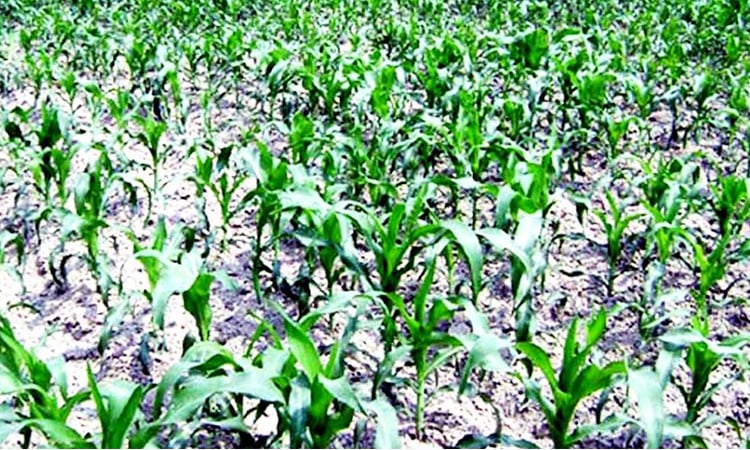News Flash
News Flash

RANGPUR, Nov 10, 2025 (BSS) – According to the target set by the government in the current (2025-2026) Rabi season, farmers in the Rangpur agricultural region will produce 13,28,993 tonnes of winter maize from 1,15,443 hectares of land.
Officials of the Department of Agricultural Extension (DAE) today told BSS that farmers have already started sowing early variety maize seeds in the same land after harvesting the short-term Aman paddy.
Maize seeds have already been sown in more than 2,500 hectares of land in the mainland and riverine char areas of the five districts of Rangpur, Gaibandha, Kurigram, Nilphamari and Lalmonirhat in the agricultural region.
After repeatedly achieving bumper production and good market prices every year in the recent past, farmers are showing keen interest in cultivating maize in the mainland and riverine char areas as demand for the crop in the local market increases.
Locally produced maize is currently being sold at rates between Taka 1,280 and Taka 1,350 per mound (every 40-kg) in the region.
In the last (2024-2025) Rabi season, farmers produced 14,25,001 tonnes of maize from 1,27,251 hectares of land against the set target of producing 13,28,993 tonnes of the crop from 1,17,043 hectares of land for the region.
“Farmers brought 1,27,251 hectares of land under maize cultivation, exceeding the fixed farming target by 10,208 hectares or 8.72 percent, in the last Rabi season,” said Acting Additional Director of DAE for Rangpur region Agriculturist Md Sirajul Islam.
Like in the previous years, hundreds of char people are cultivating maize on the vast tracts of char lands and dried-up riverbeds of the Teesta, Dharla, Brahmaputra, Jamuna, Dudhkumar, Kartoa, Ghaghot, Atrai and other tributaries this season.
“The government is distributing special agri-incentives in terms of seeds and fertilisers free of cost among small and marginal farmers to further increase maize production this season like in the previous years,” Islam said.
Deputy Director of the DAE's Burirhat Horticulture Centre in Rangpur Agriculturist Dr Md Abu Sayem said that maize cultivation in both the mainland and char regions has become more profitable for farmers and char people than many other crops.
Farmers are being inspired to cultivate maize on more land to increase production and get profitable market prices by receiving high-quality seeds, support, and modern technology from the DAE and other agricultural organizations.
“Increasing maize cultivation is contributing to poverty reduction and helping to improve the quality of life of small and marginal farmers, landless chars, and riverine people,” Sayem said.
Independence Medal-2018 (food security) winner Dr MA Mazid said that maize cultivation has become very popular and profitable in the mainland and riverine sandy char areas of Rangpur agricultural region.
Maize cultivation is more profitable than many other crops and is effectively helping farmers reduce poverty and improve their livelihood and standard of living.
“Locally produced maize has a huge demand in the thriving poultry feed, animal feed and food industries across the country,” he said.
“Farmers should adopt conservation agriculture technologies in maize cultivation to lessen the farming time and cost and get maximum output to ensure food security,” he said.
Farmers Mozammel Haque, Rafikul Islam and Abdul Gani of different villages in Rangpur Sadar and Gangachara upazilas said they are sowing maize seeds on their crop lands after harvesting Aman rice.